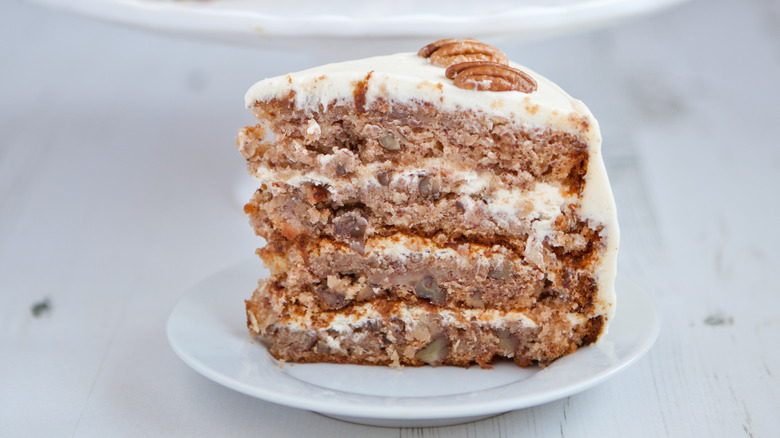The Absolute Best Way To Prepare Pineapple For Hummingbird Cake
The most classic Southern recipes are comfort food at its finest (think: fried chicken, fluffy buttermilk biscuits, creamy macaroni and cheese, and deviled eggs). And the desserts are just as deliciously decadent. From peach cobbler to banana pudding, many Southern sweet treats are famously packed with butter and sugar. One of the most iconic cakes of the lower United States is the hummingbird cake. First published in Southern Living in 1978, the recipe includes layers of cake packed with pecans, pineapple, and bananas topped with cream cheese icing.
As with most desserts — especially cakes — there are a lot of factors that go into baking the perfect hummingbird cake, from the right temperature to the right ingredients. Speaking of the latter, one of the most important ingredients in hummingbird cake is pineapple. Here's what you need to know about preparing pineapple for your cake to make sure it's the best that it can be. (Spoiler alert: It doesn't involve anything out of a can!)
Avoid using canned pineapple
The secret to a deliciously moist and flavorful hummingbird cake could lie in the type of pineapple you choose to use. While many hummingbird cake recipes (including one from The New York Times) call for canned crushed pineapple, some experts and foodies say you're better off using fresh pineapple. A reviewer at Serious Eats describes canned pineapple as "an understandable convenience, but one that pales in comparison with the bright and tangy flavor of fresh fruit."
Others agree that fresh pineapple is an easy way to instantly improve a hummingbird cake. "Its flavor is so much brighter, fresher and more intense and — in my opinion — worth the extra effort!" the blogger at Gimme Some Oven explains. "Just chop the pineapple very finely to measure it for the batter." They also recommend measuring chopped pineapple sans excess juice to make sure you're mixing in the right amount of fruit.

